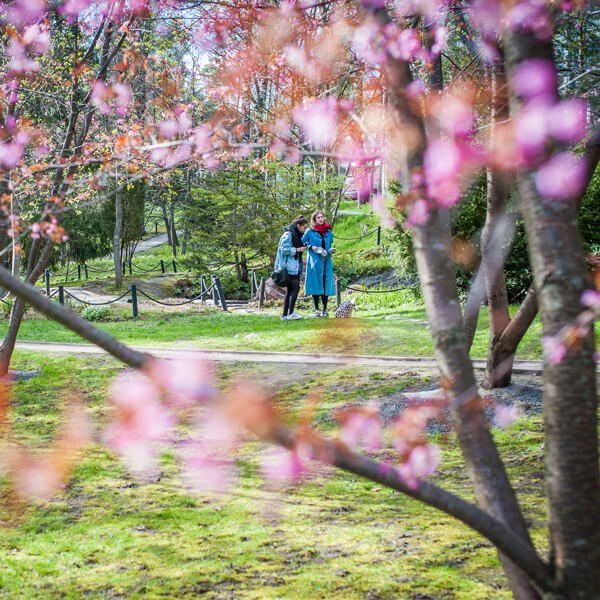Situated among the apartment buildings between Roihuvuorentie 12 and 16 is a Japanese garden that was created almost entirely by hand. Built on a terraced slope that was once a slate quarry, the Japanese garden features a moon gate, bamboo fences, shingle shelters, stone arrangements, sand waves and a rocky creek that represents the sea of life. In springtime a breathtakingly beautiful cherry tree orchard flowers on the slope.
Construction of the park began in 1990 based on the initiative of Jukka Toivonen at the Public Works Department. Fine-tuning the design of the park was a long process that took eight years. Local landscape architect Virve Veisterä helped create the final design. Most of the workers were recruited from employment schemes. Thanks to the skills of these workers and city’s own gardeners, an exotic oriental touch was added to this suburban part of East Helsinki.
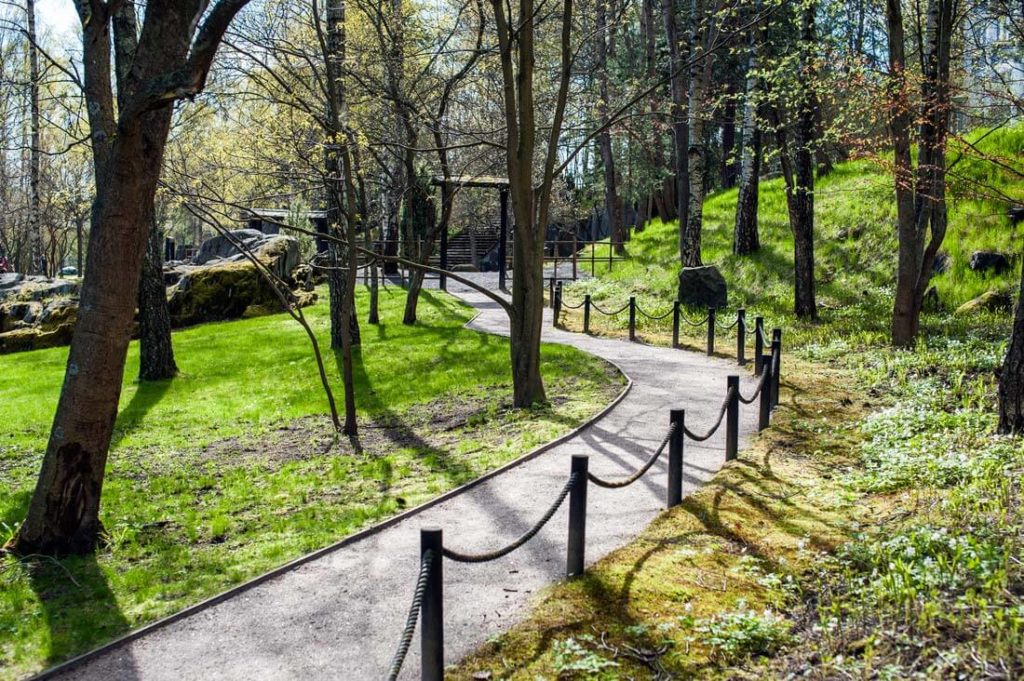
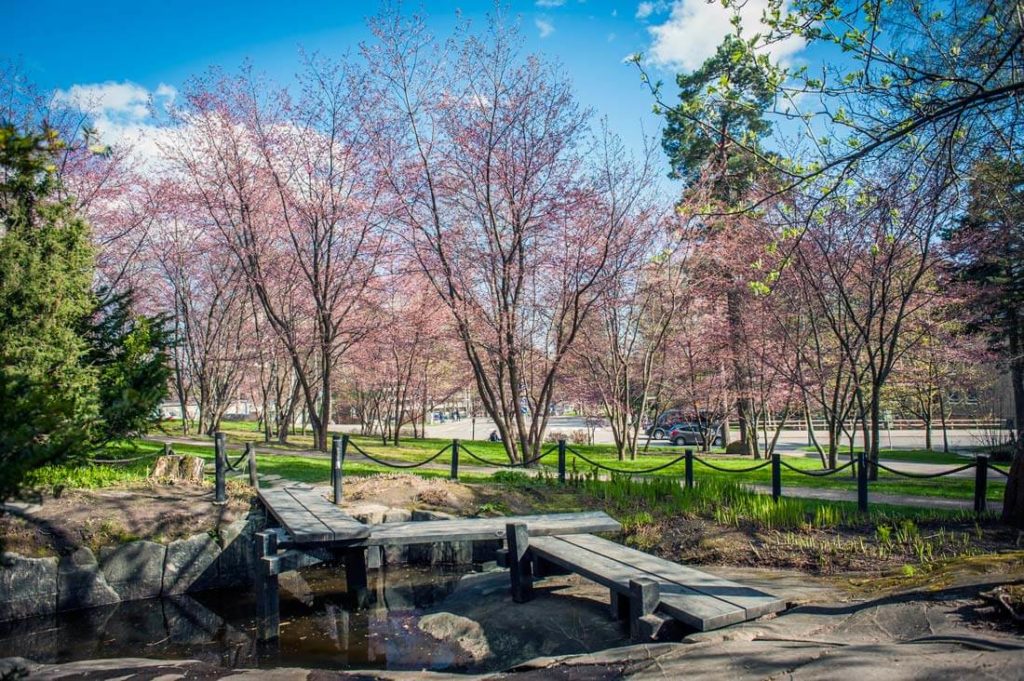
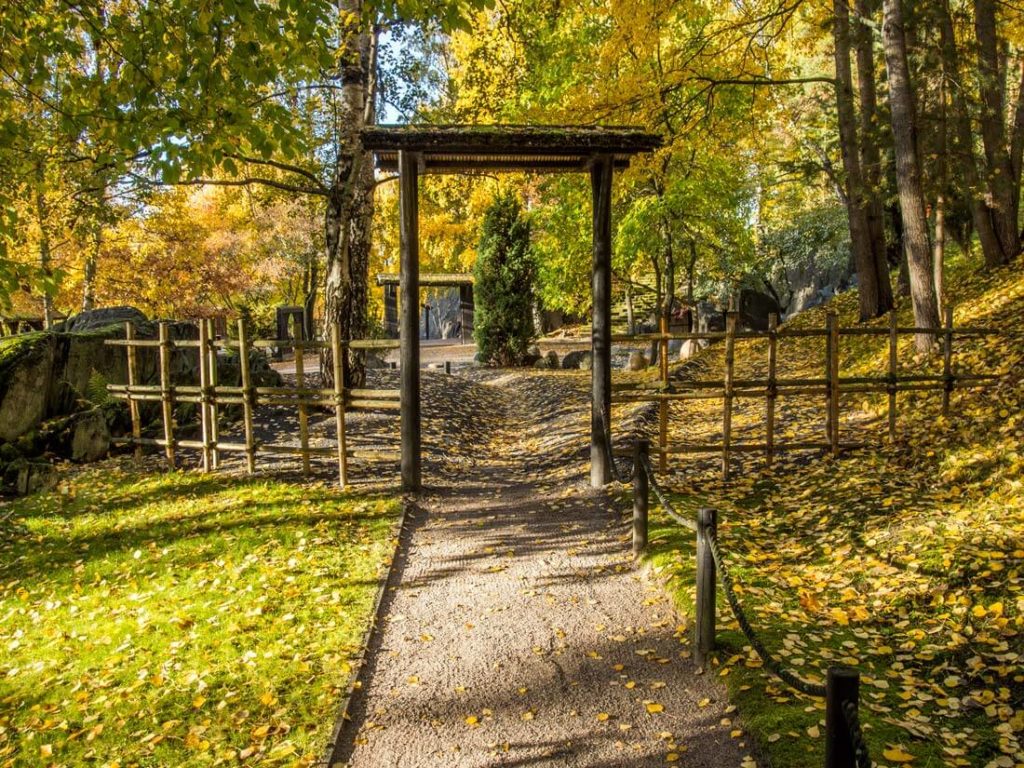
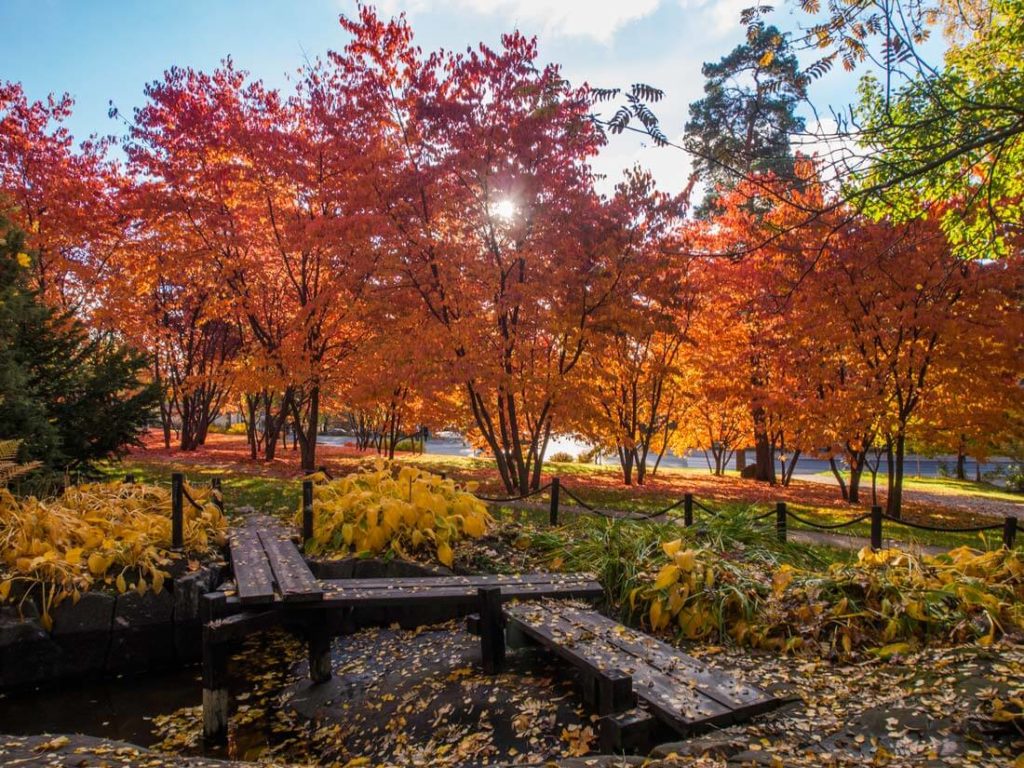
Great care was taken with all the details. Although the design was inspired by a classic oriental garden and all the related symbolism, the aim was to create an exact replica of Japan. The philosophy and religious overtones of Japanese gardening were part of the thinking, but more important was to utilise the existing natural elements in a broadly Japanese style. In particular, the aim was to highlight the considerable height variations and the natural Finnish plants. The moss-covered rocks and Finnish rowan trees were thus transformed into a Japanese mountain scene, complete with cliffs and streams.
The handsome pines and ornamental rowans and junipers that grew in the area were joined by other domestic plants, as well as Japanese plants that suited the spirit of the garden. Ultimately, the multileveled symbolism typical of Japanese gardening was applied only to a limited degree.
In keeping with the Japanese principles of land use, only the most favourable areas were developed to avoid the destruction and calamity that could be caused by building on unfavourable land. Also in keeping with Eastern philosophies, the individual gardens are named after mythical animals according to the points of the compass:
- The rock garden in the westernmost section is named “White Tiger Garden” in which the tiger stands guard against the autumn evenings.
- The small mossy stand on the northern edge is named “Black Turtle Forest Park” in which the turtle helps keep the moss and other vegetation green and healthy.
- The southern central section is named “Red Phoenix Garden” in which the mythical phoenix bird protects the midday and summer peace beside the river of life.
- The eastern wetland and cherry tree hill is named “Blue Dragon Park” in which the dragon protects the spring, mornings and blossom of life.
The Japanese garden in Roihuvuori has become a popular attraction among gardening enthusiasts, as well as an oasis for local residents. The area is equally suitable for playing pétanque or simply meditating. Each person can find his or her own private cranny in the diverse terrain. During the Hanami Festival, guided tours are arranged from the Cherry Park also to the Japan inspired garden.
When the cherry trees are in blossom, you could recite the words of Pablo Neruda to your loved one: “I want to do with you what spring does with the cherry trees!”


